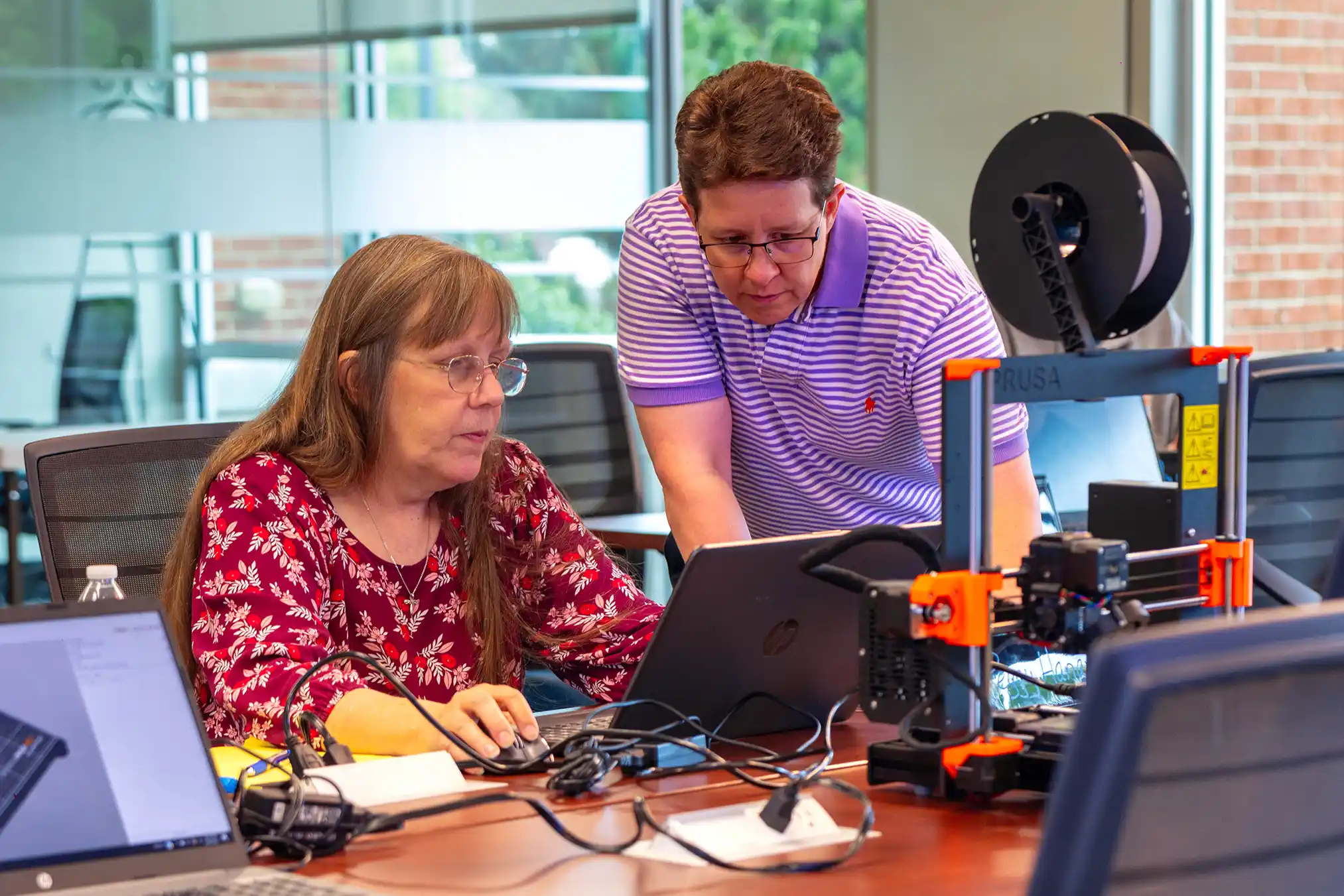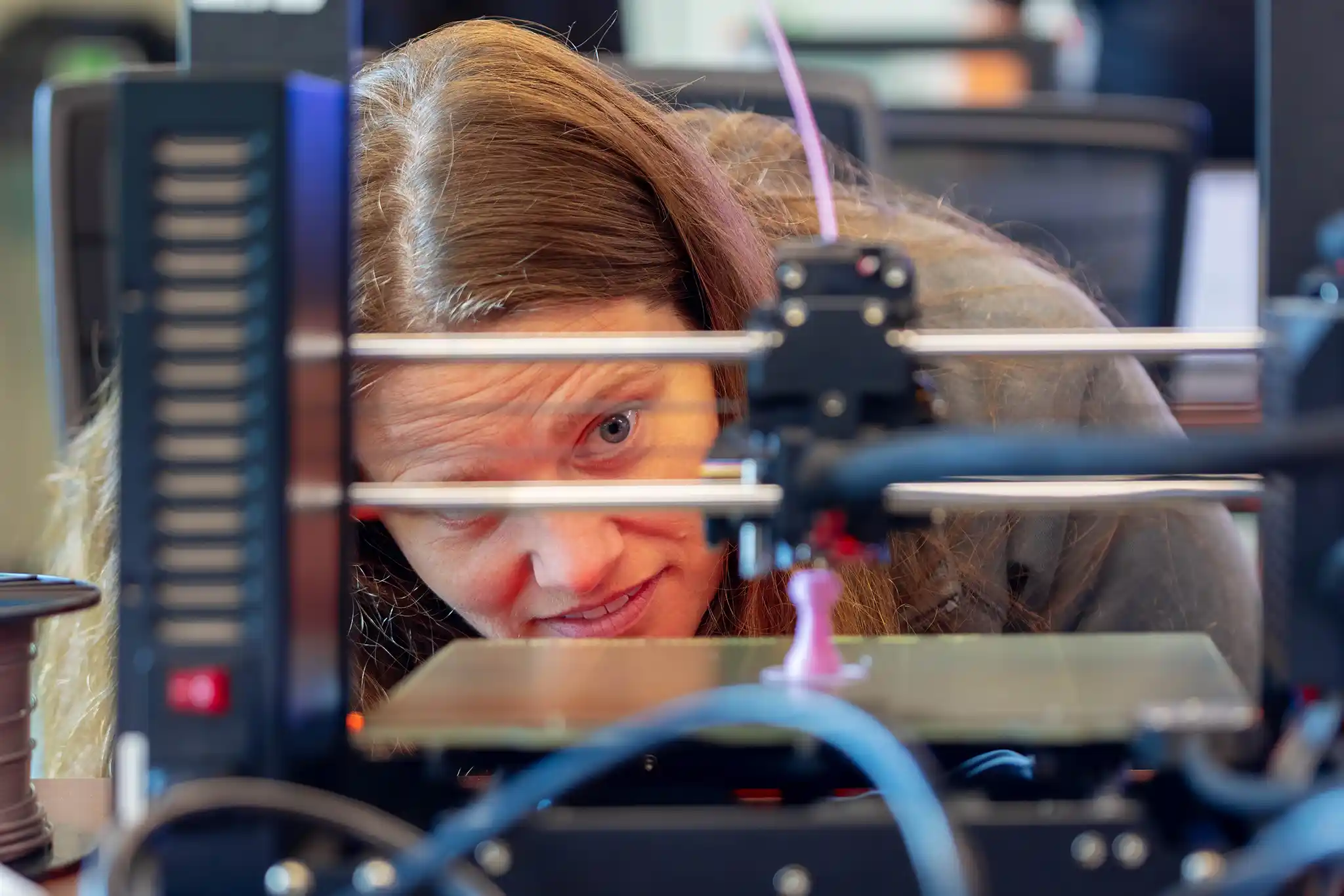3D design helps teachers’ lesson plans pop off the page

In today’s world, the technology in a child’s hand can sometimes grab their attention better than the materials they’re given in the classroom. Thankfully, teachers have learned to keep their students’ attention by having the ability to literally make their textbooks pop out at them. With 3D printing, teachers and their curricula now have the chance to be more interactive and hands-on than ever before. Screens and algorithms may vie for our children’s attention, but true learning favors the tangible. When the technology in a child’s hand is more advanced than what’s at their desk, teachers are forced to adapt. Thankfully most are willing, enthusiastic even, to do so.
In June, ORISE gave teachers of all levels and subjects a chance to explore 3D design in a day-long mini academy. Teachers were instructed to come to the course with some of their own lesson plans in mind, in the hopes that they’d be able to turn those one-dimensional lectures into a three-dimensional learning experience. This form of learning is not just for STEM teachers. While math and science instructors attended, there were also theater teachers in attendance, who hoped to use 3D printing for their stage sets.
"From what I’ve seen most teachers are willing to adapt and try out this new technology, and even ‘fail forward’ to see that eventually succeed. I also see that kids, no matter what their backgrounds are, respond positively to something like [3D printing] in their classrooms. That’s why I encourage all disciplines and age groups to take a course like this."
-Kristy Hutson, an Oak Ridge High School teacher who led the 3D printing course
STEM education is on the rise in Tennessee public schools, often resulting in technology like 3D printers becoming commonplace or at least present in the classroom. While change can be complicated, most teachers are embracing the idea of utilizing this new technology in their curriculum.
“From what I’ve seen most teachers are willing to adapt and try out this new technology, and even ‘fail forward’ to see that eventually succeed,” said Kristy Hutson, an Oak Ridge High School teacher who led the 3D printing course. “I also see that kids, no matter what their backgrounds are, respond positively to something like [3D printing] in their classrooms. That’s why I encourage all disciplines and age groups to take a course like this.”
3D design is not necessarily a new technology. The first 3D printer was initially conceived in the 1980’s, with models becoming commercially available around the mid 2000s. Thanks to time and increased accessibility, the technology has become more readily available. Hannah Medema, a business teacher at Coalfield High School, commented on the eagerness of non-STEM teachers to get into 3D design:

“Maybe I could incorporate this into lessons I already have. We’ve made products in business class before, so maybe we make a miniature version, so hopefully I can explore that more,” Medema said.
For many teachers, adaptation can be a scary word. With the right guidance and a willingness to “fail forward,” adapting can be approached with excitement rather than trepidation.
Media Contacts
Pam Bonee
Director, Communications
Phone: 865.603.5142
pam.bonee@orau.org
Wendy West
Manager, Communications
Phone: 865.207.7953
wendy.west@orau.org
The Oak Ridge Institute for Science and Education (ORISE) is a U.S. Department of Energy (DOE) asset that is dedicated to enabling critical scientific, research, and health initiatives of the department and its laboratory system by providing world class expertise in STEM workforce development, scientific and technical reviews, and the evaluation of radiation exposure and environmental contamination.
ORISE is managed by ORAU, a 501(c)(3) nonprofit corporation and federal contractor, for DOE’s Office of Science. The single largest supporter of basic research in the physical sciences in the United States, the Office of Science is working to address some of the most pressing challenges of our time. For more information, please visit science.osti.gov.

